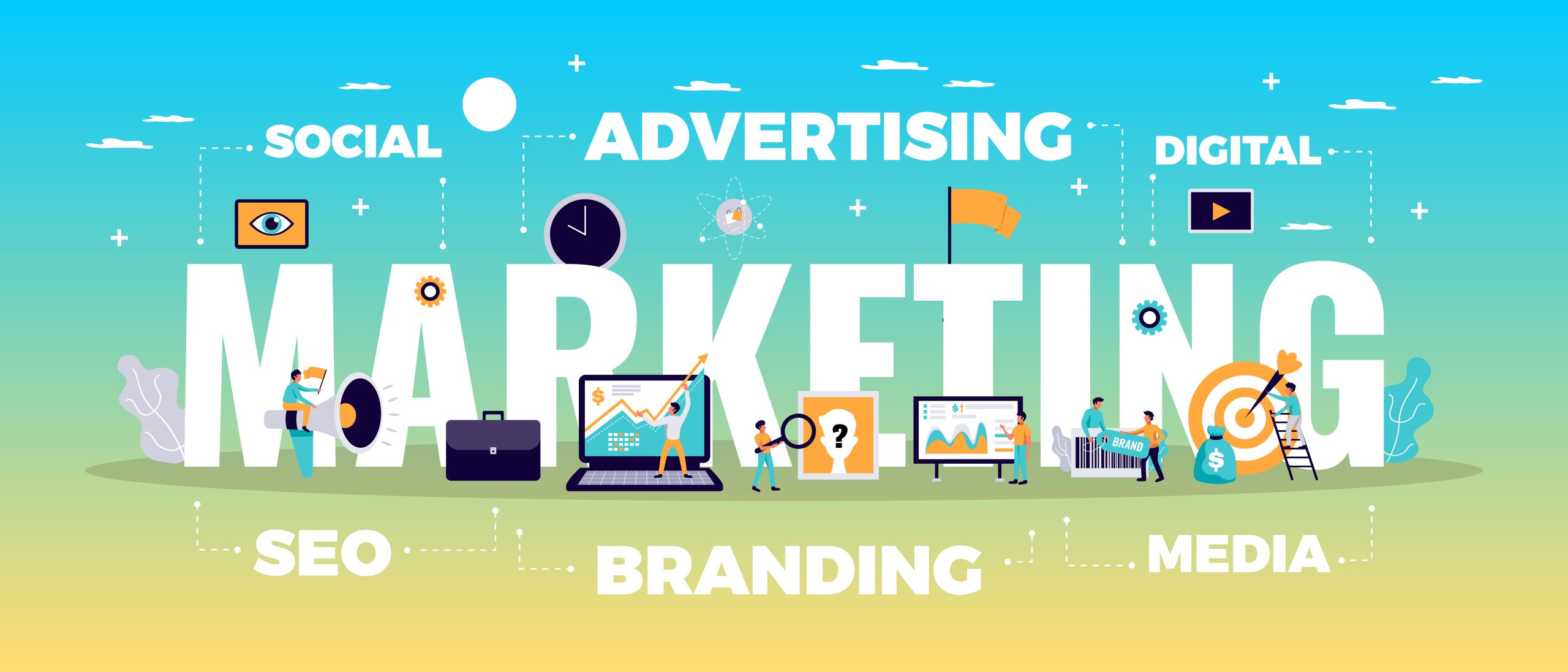
In the ever-evolving world of business and consumer engagement, understanding the difference between marketing and advertising is essential. While these two terms are often used interchangeably, they actually have distinct meanings and play different roles in promoting a brand, product, or service. In this article, we unravel the distinction between marketing and advertising, shedding light on their unique functions and how they complement each other.
Marketing encompasses a wide range of activities aimed at creating, communicating, and delivering value to customers. It involves market research, strategic planning, product development, pricing, distribution, and customer relationship management. On the other hand, advertising is a specific component of marketing that focuses on promoting a product, service, or brand through paid channels like television, radio, print media, online platforms, and social media.
By understanding the nuances between marketing and advertising, businesses can develop comprehensive strategies that effectively reach and engage their target audiences. Whether you’re a business owner, marketer, or simply curious about the world of promotion, this article will provide you with a clear understanding of the roles marketing and advertising play in driving business success.
What is marketing?
Marketing encompasses a wide range of activities aimed at creating, communicating, and delivering value to customers. It is a strategic approach that involves understanding customer needs and wants, and developing products or services that fulfill those needs. Market research is a crucial component of marketing, as it helps businesses identify their target audience, analyze market trends, and gain insights into consumer behavior.
Strategic planning is another integral part of marketing, where businesses develop a roadmap for achieving their marketing objectives. This includes setting goals, determining marketing budgets, and formulating strategies to reach and engage the target market effectively. Product development is also an essential aspect of marketing, as it involves creating and refining products or services to meet customer demands.
Pricing is another critical element of marketing, as it determines the value customers perceive in a product or service. Businesses must strategically set prices that align with customer expectations, market conditions, and competitive factors. Distribution is yet another facet of marketing, as it involves getting products or services to the right place at the right time. This includes selecting distribution channels, managing inventory, and ensuring efficient delivery.
Customer relationship management is the final piece of the marketing puzzle, as it focuses on building and maintaining strong relationships with customers. This involves understanding customer needs, providing excellent customer service, and implementing strategies to retain existing customers and attract new ones. Overall, marketing is a comprehensive approach that encompasses various elements to create, communicate, and deliver value to customers.
What is advertising?
While marketing encompasses a wide range of activities, advertising is a specific component of marketing that focuses on promoting a product, service, or brand through paid channels. Advertising is the process of creating and executing persuasive messages to attract and inform potential customers about a particular product or service. It involves using various media platforms such as television, radio, print media, online platforms, and social media to reach a wide audience.
Advertising aims to create awareness, generate interest, and stimulate desire for a product or service. Through compelling visual and verbal messages, advertisers seek to engage consumers and persuade them to take action, such as making a purchase or visiting a store. Advertising campaigns often employ creative tactics to capture attention, evoke emotions, and differentiate a brand from its competitors.
The success of an advertising campaign relies on effective targeting, message positioning, and media selection. Advertisers must identify their target audience and tailor their messages to resonate with their needs and preferences. They must also choose the most appropriate media channels to reach their target audience effectively. With the rise of digital advertising, advertisers can now leverage advanced targeting capabilities and data-driven insights to refine their campaigns further.
Key differences between marketing and advertising
While marketing and advertising are closely related, there are key differences that set them apart. Marketing is a broader concept that encompasses various activities aimed at creating value for customers and achieving business goals. It involves market research, strategic planning, product development, pricing, distribution, and customer relationship management. Advertising, on the other hand, is a specific component of marketing that focuses on promoting products, services, or brands through paid channels.
Another key difference is the scope of each concept. Marketing involves a holistic approach that encompasses all aspects of delivering value to customers, while advertising focuses solely on promotional activities. Marketing is a long-term strategy that aims to build strong relationships with customers and create brand loyalty. Advertising, on the other hand, is often short-term and aims to generate immediate results in terms of sales or brand awareness.
The role of marketing in business
Marketing plays a crucial role in driving business success. By understanding customer needs and preferences, businesses can develop products or services that cater to those needs, creating a competitive advantage in the market. Market research helps businesses identify market trends, consumer behavior patterns, and competitive landscape, enabling them to make informed decisions about product development, pricing, and distribution strategies.
Strategic planning is another vital aspect of marketing, as it helps businesses set goals, allocate resources, and formulate strategies to achieve those goals. A well-defined marketing strategy ensures that businesses are targeting the right audience with the right messages through the most effective channels. It also helps businesses stay ahead of the competition and adapt to changing market conditions.
Marketing also plays a significant role in building and maintaining strong relationships with customers. Effective customer relationship management strategies help businesses retain existing customers, attract new ones, and create brand loyalty. By delivering value and excellent customer service, businesses can foster long-term relationships with customers, leading to repeat purchases and positive word-of-mouth.
The role of advertising in business
While marketing sets the foundation for business success, advertising plays a vital role in promoting products, services, or brands. Advertising helps create awareness, generate interest, and stimulate desire for a particular product or service. By reaching a wide audience through various media channels, advertising allows businesses to communicate their brand message effectively and capture the attention of potential customers.
Advertising campaigns are designed to be persuasive and compelling, using creative tactics to engage consumers and drive them to take action. Through visually appealing advertisements, catchy slogans, and memorable jingles, advertisers aim to create a positive brand image and differentiate their product or service from competitors. Effective advertising campaigns can lead to increased sales, brand recognition, and customer loyalty.
The relationship between marketing and advertising
While marketing and advertising are distinct concepts, they are closely related and complement each other. Marketing provides the strategic framework and foundation for advertising efforts. By conducting market research, developing a marketing strategy, and understanding customer needs, businesses can create effective advertising campaigns that resonate with their target audience.
Advertising, in turn, supports marketing objectives by promoting products, services, or brands to the target market. Through advertising, businesses can create awareness, generate interest, and stimulate desire for their offerings. Advertising also helps businesses communicate their unique value proposition and build brand recognition. By aligning advertising efforts with marketing strategies, businesses can achieve their marketing objectives and drive business success.
Examples of effective marketing campaigns
To illustrate the power of marketing, let’s look at some examples of effective marketing campaigns:
1. Coca-Cola’s “Share a Coke” campaign: This marketing campaign personalized Coca-Cola bottles by featuring popular names and encouraging people to share a Coke with someone. The campaign successfully increased brand engagement and sales.
2. Apple’s “Think Different” campaign: This marketing campaign focused on Apple’s core values and positioned the brand as innovative and revolutionary. It helped Apple differentiate itself from competitors and build a strong brand image.
3. Nike’s “Just Do It” campaign: This marketing campaign focused on inspiring people to take action and pursue their dreams. It positioned Nike as a brand that supports athletes and encourages a “can-do” attitude.
These examples highlight how effective marketing campaigns can create customer engagement, build brand loyalty, and drive business growth.
Examples of effective advertising campaigns
To illustrate the impact of advertising, let’s look at some examples of effective advertising campaigns:
1. Volkswagen’s “Think Small” campaign: This advertising campaign challenged the conventions of car advertising by highlighting the small size of Volkswagen cars. It resonated with consumers and helped Volkswagen establish a unique brand identity.
2. Old Spice’s “The Man Your Man Could Smell Like” campaign: This advertising campaign featured a humorous and memorable character that resonated with both men and women. It successfully increased brand awareness and sales.
3. Dove’s “Real Beauty” campaign: This advertising campaign challenged traditional beauty standards and celebrated diversity. It positioned Dove as a brand that promotes body positivity and self-acceptance.
These examples demonstrate how effective advertising campaigns can capture attention, evoke emotions, and influence consumer behavior.
Conclusion
In conclusion, understanding the difference between marketing and advertising is crucial for businesses to develop comprehensive strategies that effectively reach and engage their target audiences. While marketing encompasses a wide range of activities aimed at creating, communicating, and delivering value to customers, advertising focuses specifically on promoting products, services, or brands through paid channels.
Marketing plays a vital role in driving business success by understanding customer needs, developing products or services that fulfill those needs, and building strong relationships with customers. Advertising, on the other hand, plays a crucial role in promoting products, services, or brands by creating awareness, generating interest, and stimulating desire among potential customers.
By aligning marketing and advertising efforts, businesses can create compelling campaigns that resonate with their target audience, generate brand awareness, and drive business growth. Understanding the nuances between marketing and advertising is key to developing effective strategies that leverage both concepts to achieve business objectives. Whether you’re a business owner, marketer, or simply curious about the world of promotion, having a clear understanding of the roles marketing and advertising play is essential in today’s competitive marketplace.




